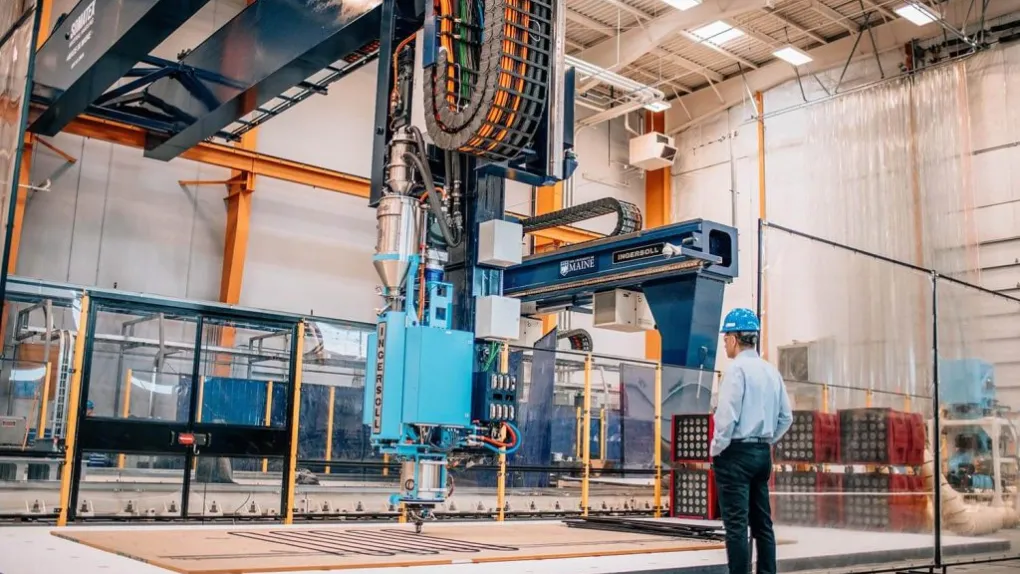The University of Maine has introduced a groundbreaking innovation to the world: the Factory of the Future, the largest 3D printer ever built. This colossal printer boasts impressive dimensions, capable of crafting objects up to 96 feet long, 32 feet wide, and 18 feet high. Not only is it massive, but it’s also incredibly fast, with a printing speed of approximately 500 pounds per hour.
Versatile Printing Capabilities
What sets the Factory of the Future apart is its ability to adapt its printing techniques dynamically, ensuring optimal results for complex tasks. It seamlessly transitions between various methods, including large-scale additive manufacturing, subtractive manufacturing, robot arm operations, and continuous tape layup. Compared to Europe’s largest 3D-printed building, constructed in 140 hours, the Factory of the Future’s efficiency in completing projects in under 80 hours marks a significant advancement.

Revolutionizing Home Construction
One of the most remarkable feats of this colossal printer is its capability to construct an entire house in just 80 hours or less. While these homes may be simple one-story structures, they hold immense potential in addressing housing shortages. With Maine aiming to build an additional 80,000 homes by 2030, the rapid construction facilitated by this printer could substantially expedite the process.
Sustainable and Recyclable
An additional boon of the Factory of the Future is its eco-friendly approach. Everything it prints is recyclable, paving the way for a more sustainable construction industry. The ability to break down printed materials for reuse not only minimizes waste but also offers a promising solution for future construction endeavors.
Diverse Applications Beyond Housing
Beyond residential construction, the Factory of the Future opens doors to a myriad of possibilities. Its creators envision its use in building vehicles such as submarines, maritime vessels, and military assets, earning praise for its potential contributions to national security. However, amidst these grandiose ambitions, the printer’s potential to address homelessness and foster sustainable housing remains a particularly compelling prospect.
The University of Maine’s Factory of the Future represents a monumental leap forward in construction technology, promising to reshape industries and communities alike with its remarkable capabilities.


